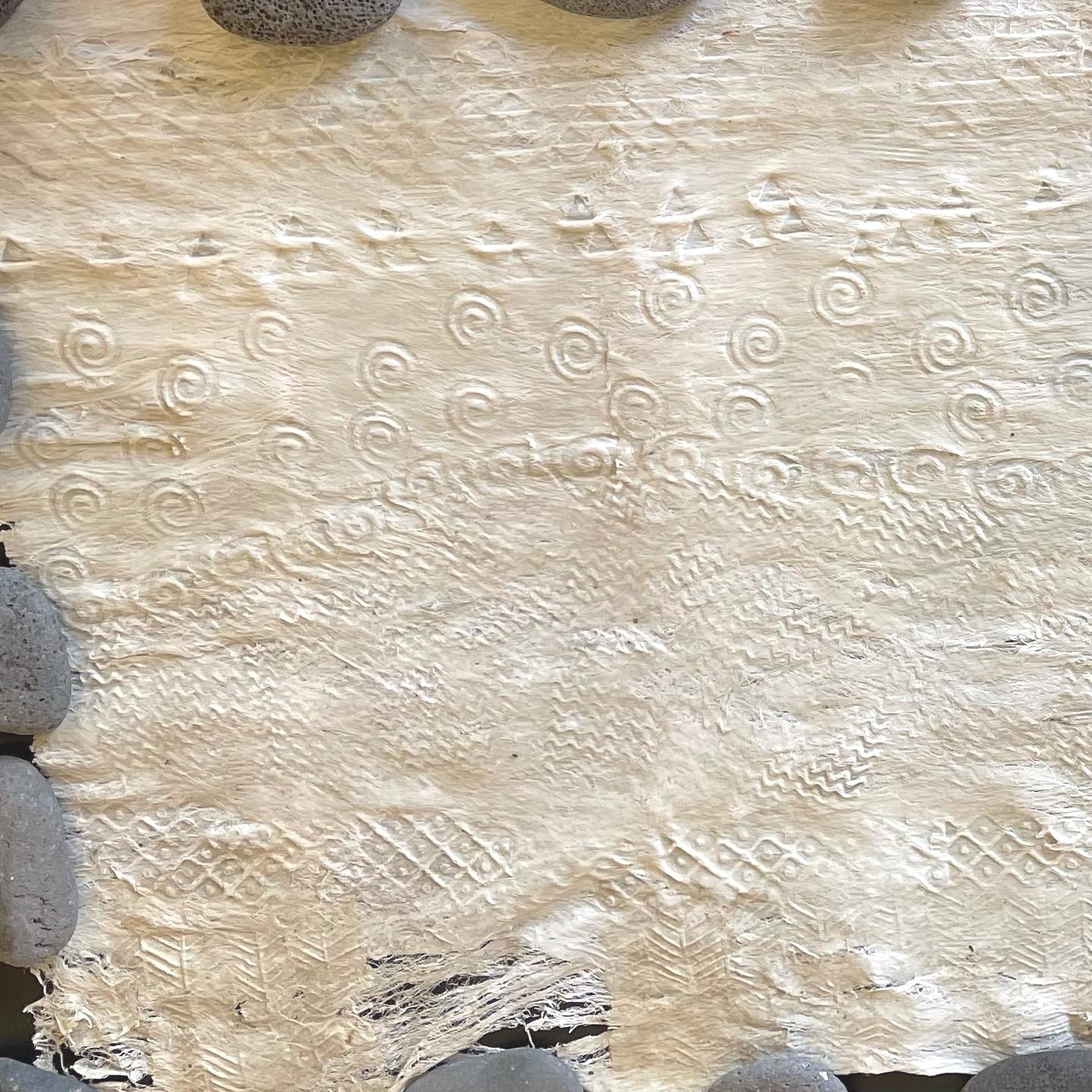Wauke, fiber source for kapa
Wauke (Broussonetia papyrifera) is considered to be a canoe plant. Plant DNA studies have shown that ancient Polynesian explorers took wauke with them on their travels. It didn’t surprise me to learn that wauke originally came from Asia. Dak (Korean paper mulberry tree) is the source material for hanji, Korean paper, which is a primary material that I use for my art practice. There are so many similiaries in the making processes for kapa and joomchi.
Connection to the land
Learning to tend the wauke grove, taking care of the source, was the first lesson my kumu taught me. These regular encounters with the land and plants cultivated my relationship with the land and heightened my sense of responsibility of stewardship of the land. My kumu’s words “If you take care of the source, it will take care of you” ring true to this day.

Links between kapa and bojagi
As I study the cultural significance of kapa, it reminds me of another Korean textile tradition, bojagi, the Korean wrapping cloth. Both kapa and bojagi are used to wrap sacred items, used for gifting and carry with them positive energy. It is a privilege to learn Hawaiian culture through this creative process. Seeing similarities in the processes and materials remind me that we are all interconnected and that we have more in common than differences. The concepts of unity, mending, healing, shelter, and protection that are represented by kapa and bojagi resonate with me. This journey of self-discovery through the art and craft of kapa and integrating Korean textile traditions with kapa to create contemporary art has been a rich, satisfying, and transformative experience.

